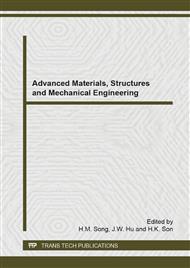p.749
p.755
p.760
p.765
p.770
p.776
p.782
p.787
p.792
Preparation and Characterization of Matrimid-Based Carbon Membrane Supported on Tube for CO2 Separation
Abstract:
A series of research had been conducted to alter the performance of carbon membranes by manipulating the parameters during the fabrication process. In this study, the effects of carbonization temperature on the performance of carbon membrane were investigated. Matrimid-based carbon membrane supported on ceramic tube was fabricated through the dip-coating technique. The prepared membranes were characterized by using the scanning electron microscopy (SEM) and pure gas permeation test for the study on morphological structure and gas separation performance, respectively. The carbonization process was performed at different carbonization temperatures (600, 700, and 800 oC) for the same heating rate of 1 oC/min under Ar flow. The increment of carbonization temperature produced carbon membrane with small size of pores. The carbon membrane prepared at 800 oC showed the highest CO2/CH4 and CO2/N2 selectivity of 79.65 and 74.76, respectively.
Info:
Periodical:
Pages:
770-775
Citation:
Online since:
September 2014
Authors:
Keywords:
Price:
Сopyright:
© 2014 Trans Tech Publications Ltd. All Rights Reserved
Share:
Citation:



